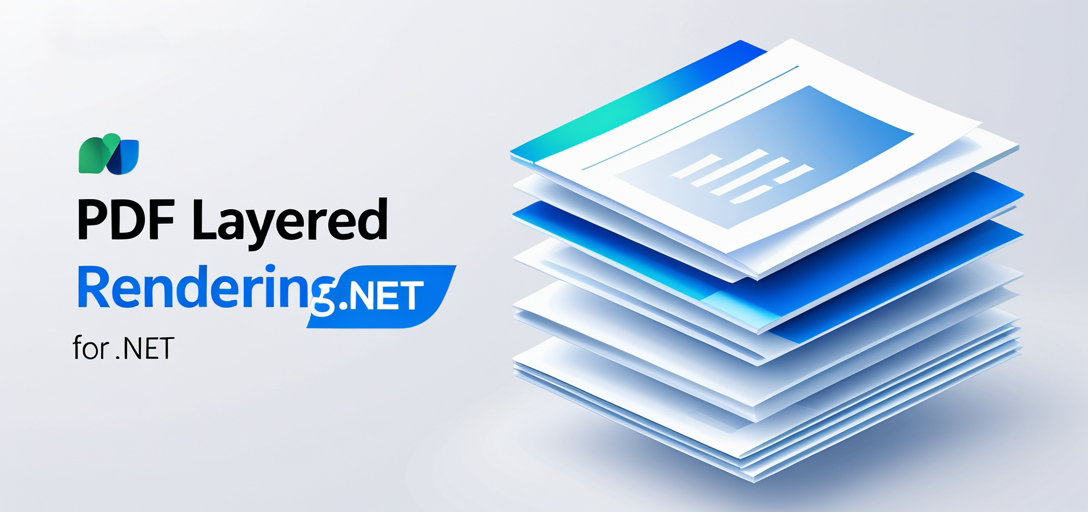Master .NET PDF Layered Rendering with GroupDocs.Viewer: A Step-by-Step Guide
Introduction
Struggling to render PDF documents while preserving their layered structure and Z-Index order? This step-by-step guide will show you how to address these challenges using GroupDocs.Viewer for .NET. Whether you’re an experienced developer or just starting, gain insights into rendering PDFs with precision.

What You’ll Learn
- Set up and use GroupDocs.Viewer for .NET efficiently
- Implement layered rendering of PDF documents
- Optimize performance settings effectively
- Explore real-world applications of this feature
Prerequisites
Before you begin, ensure the following are in place:
Required Libraries, Versions, and Dependencies
- GroupDocs.Viewer for .NET: Version 25.3.0
- Basic knowledge of C# programming
- Visual Studio or any compatible IDE
Environment Setup Requirements
Ensure your development environment is ready with the .NET Framework installed.
Knowledge Prerequisites
Familiarity with C# and basic concepts of PDF document structure will be beneficial but not mandatory.
Setting Up GroupDocs.Viewer for .NET
To start, install the GroupDocs.Viewer package using either the NuGet Package Manager Console or the .NET CLI:
NuGet Package Manager Console
Install-Package GroupDocs.Viewer -Version 25.3.0
.NET CLI
dotnet add package GroupDocs.Viewer --version 25.3.0
License Acquisition Steps
- Free Trial: Download a free trial from the official site to explore features.
- Temporary License: Obtain a temporary license for full-feature access through GroupDocs’ purchase page.
- Purchase: For long-term use, consider purchasing a license at the official store.
Basic Initialization and Setup with C#
Here’s how to initialize GroupDocs.Viewer in your .NET project:
using GroupDocs.Viewer;
using GroupDocs.Viewer.Options;
// Initialize viewer object with input file path
using (Viewer viewer = new Viewer("sample.pdf"))
{
// Configuration and rendering code will go here
}
Implementation Guide
Layered Rendering of PDF Documents
This feature allows you to render a PDF document while preserving its layered structure. Here’s how to implement it:
Overview
We’ll focus on using GroupDocs.Viewer for .NET to maintain the layered integrity of your PDFs.
Step 1: Load Your PDF Document
string filePath = "YOUR_INPUT_PDF_FILE_PATH";
using (Viewer viewer = new Viewer(filePath))
{
// Further processing will be done here
}
Why: Loading the document is essential to ensure all layers are accessible for rendering.
Step 2: Configure Rendering Options
PdfViewOptions options = new PdfViewOptions("YOUR_OUTPUT_DIRECTORY\output.pdf");
options.RenderComments = true; // Optional: Render comments if needed
Why: Configuring these options allows you to customize how the PDF is rendered, including whether or not to display annotations like comments.
Step 3: Render the Document
viewer.View(options);
Why: This method processes and renders your document according to specified options while maintaining its layered structure.
Troubleshooting Tips
- Ensure all necessary permissions are set for reading input paths and writing to output directories.
- Double-check version compatibility of GroupDocs.Viewer with your .NET environment.
Practical Applications
Layered rendering is crucial in scenarios like:
- Architectural Design: Maintain the integrity of design layers during digital sharing.
- Legal Documents: Ensure annotations are properly layered for easy review and approval processes.
- Educational Materials: Keep diagrams and notes clearly separated within educational PDFs.
Performance Considerations
To optimize performance while using GroupDocs.Viewer:
- Use appropriate memory management techniques in .NET, such as disposing of objects with
usingstatements. - Profile your application to identify bottlenecks related to rendering large documents.
- Leverage asynchronous programming for non-blocking UI interactions when processing heavy PDFs.
Conclusion
In this tutorial, we covered how to implement layered rendering using GroupDocs.Viewer for .NET. By following these steps and understanding the underlying concepts, you can enhance your applications’ ability to handle complex PDF structures.
Next Steps: Experiment with different configurations or explore other features of GroupDocs.Viewer to further expand your application’s capabilities.
Call-to-Action
Ready to put this into practice? Implement layered rendering in your next project using GroupDocs.Viewer for .NET and elevate your document handling solutions!
FAQ Section
Q1: How do I handle large PDF files with GroupDocs.Viewer?
A1: Consider breaking down the file into smaller sections or optimizing performance through asynchronous processing.
Q2: Can GroupDocs.Viewer be used in a cloud environment?
A2: Yes, but ensure you manage resources effectively to accommodate network latency and storage constraints.
Q3: What are some common licensing issues with GroupDocs.Viewer?
A3: Make sure your license covers all the features you intend to use, especially for commercial applications.
Q4: How do I troubleshoot rendering errors in GroupDocs.Viewer?
A4: Check error logs and ensure that document paths and permissions are correctly configured. Consult the API Reference for detailed guidance.
Q5: What are some best practices for integrating GroupDocs.Viewer with other .NET systems?
A5: Use middleware or service-oriented architectures to facilitate seamless integration, ensuring that data flows smoothly between applications.